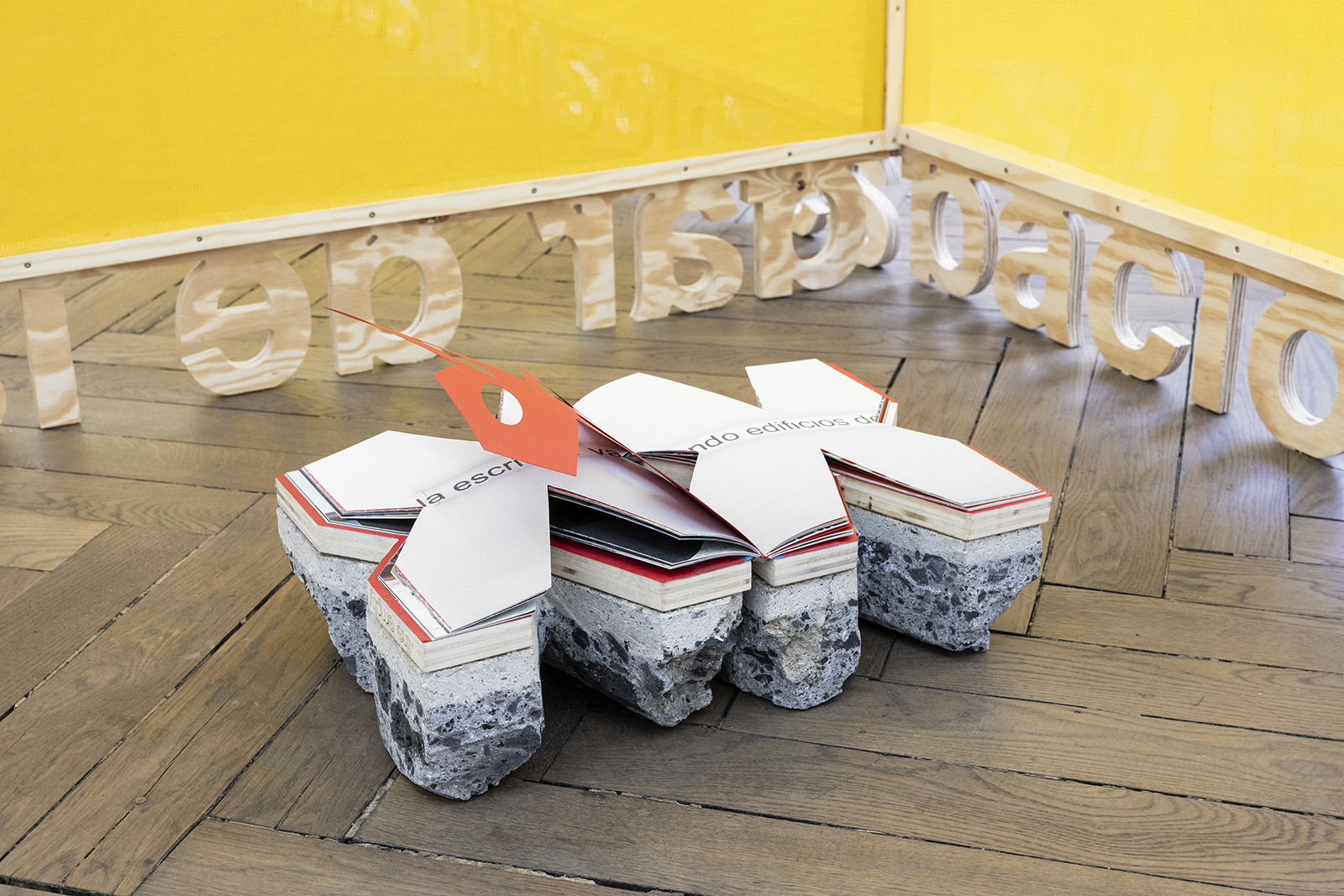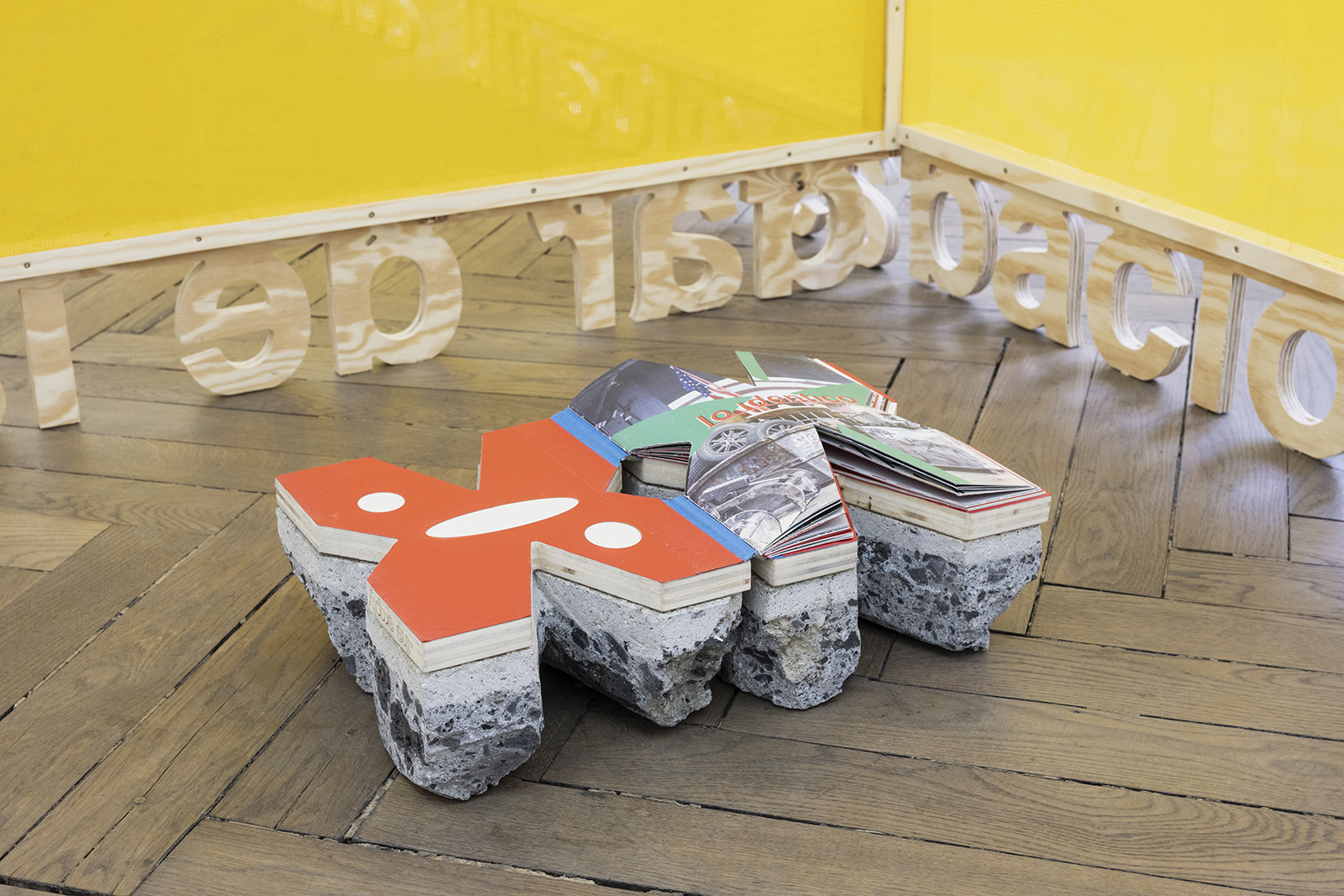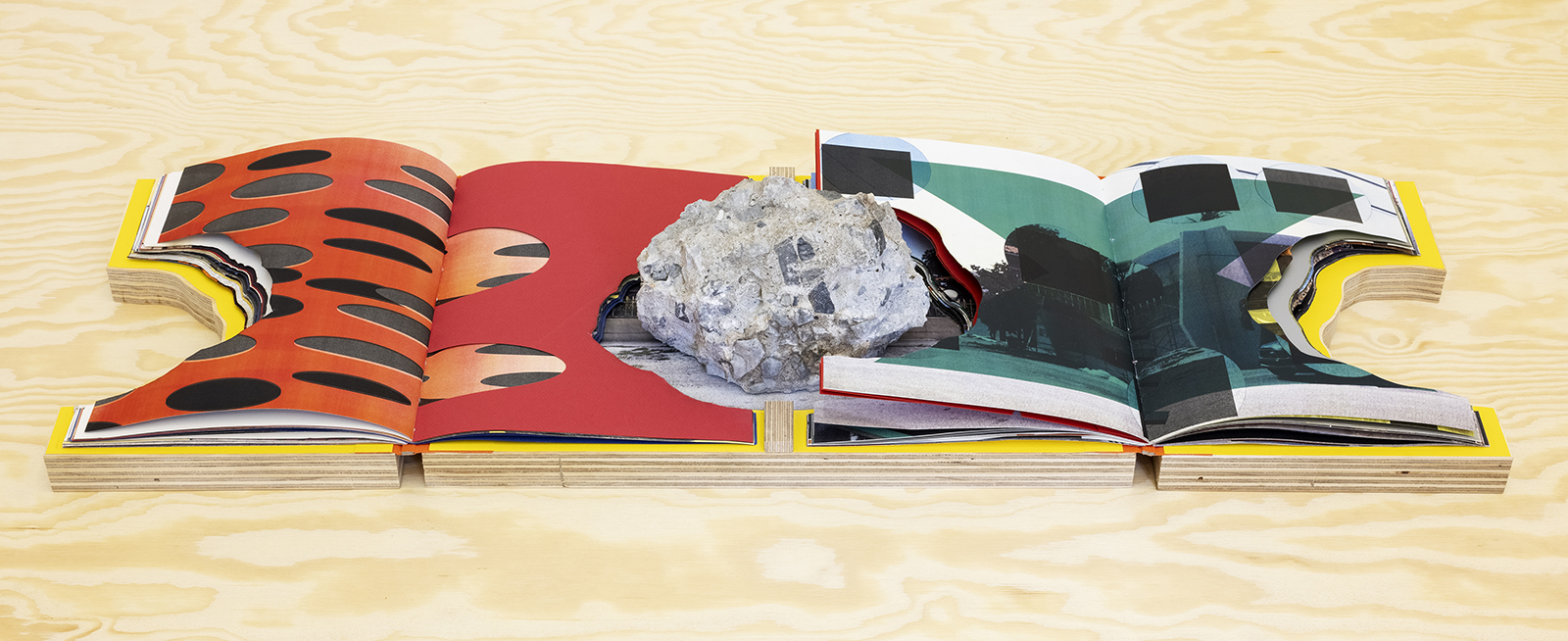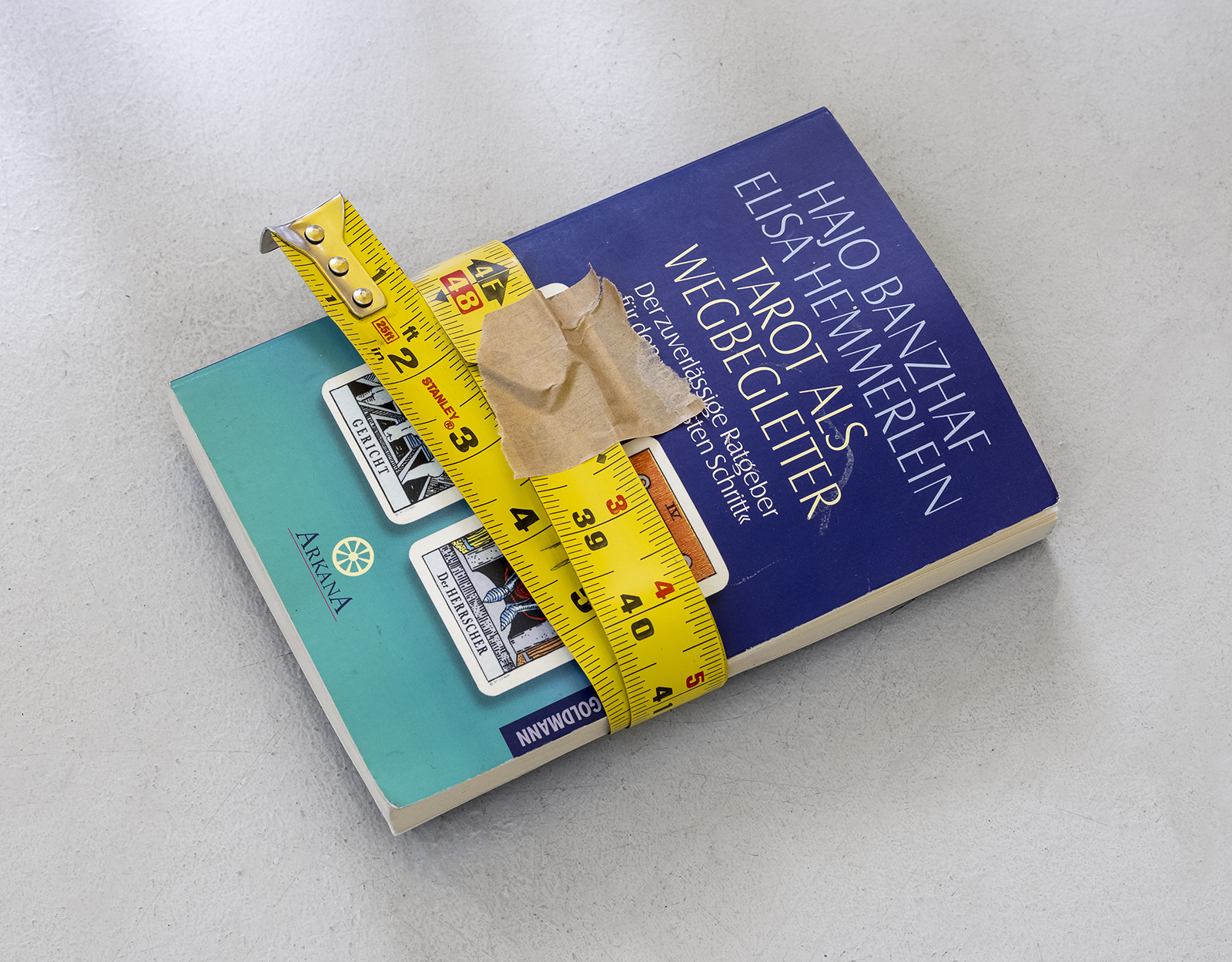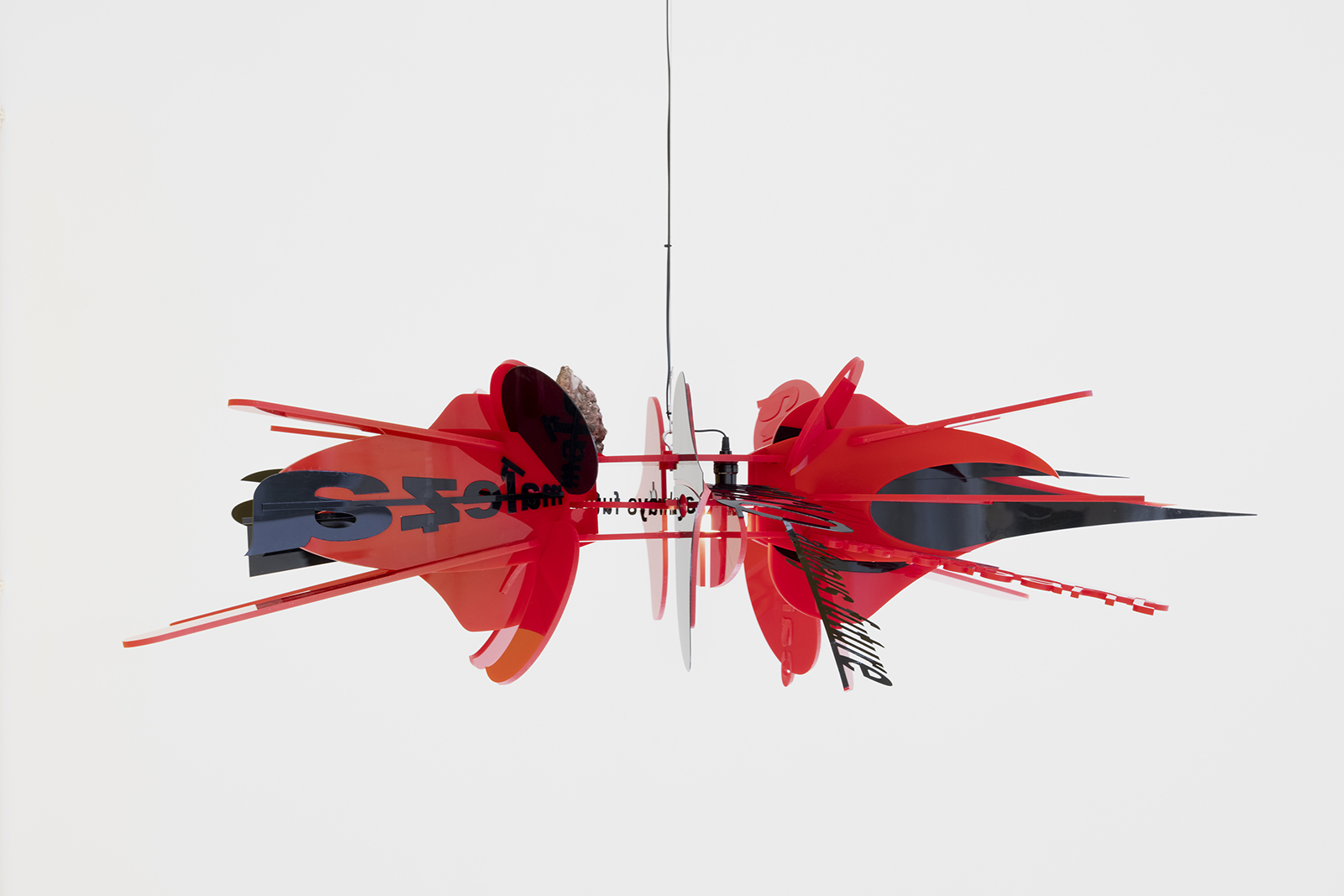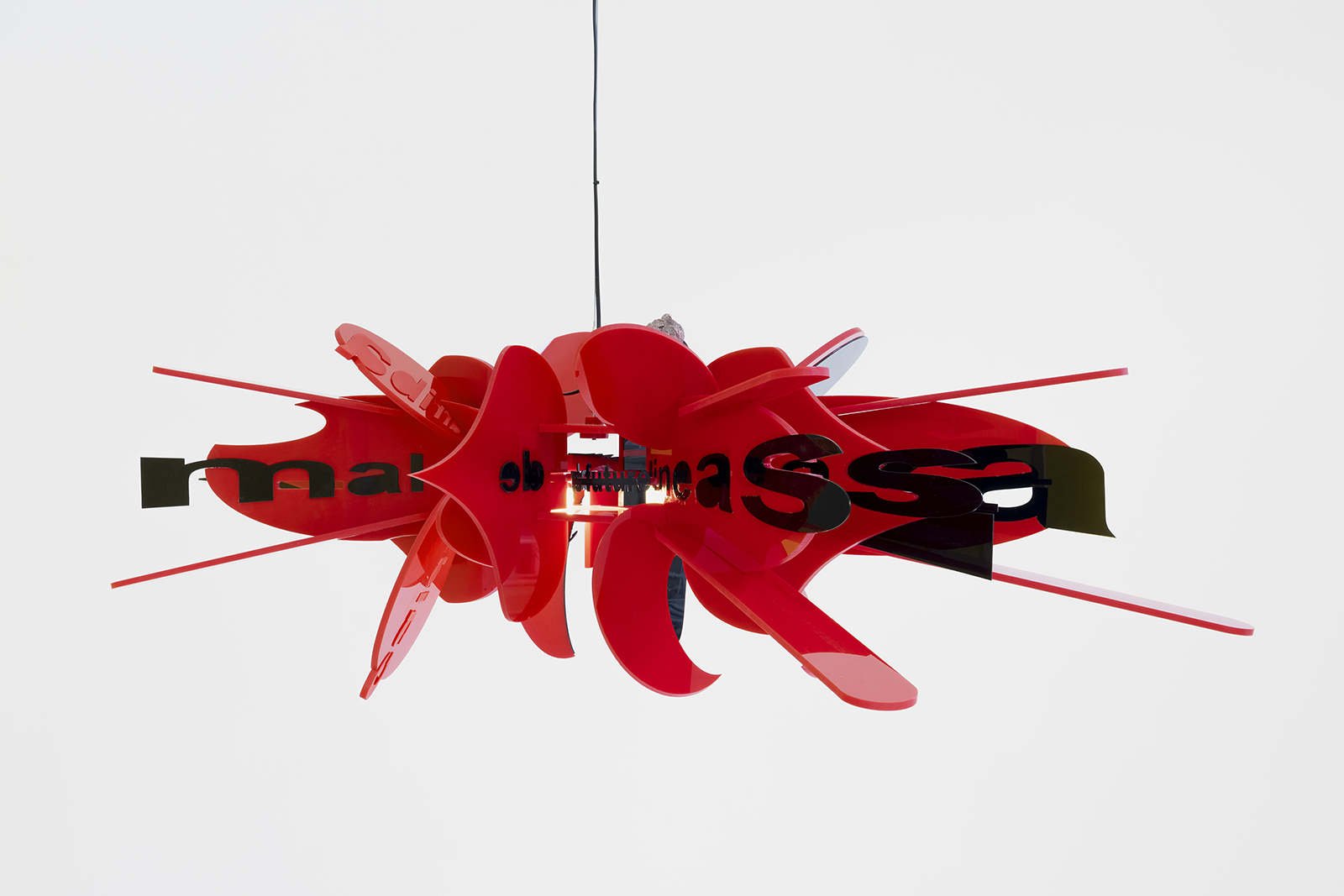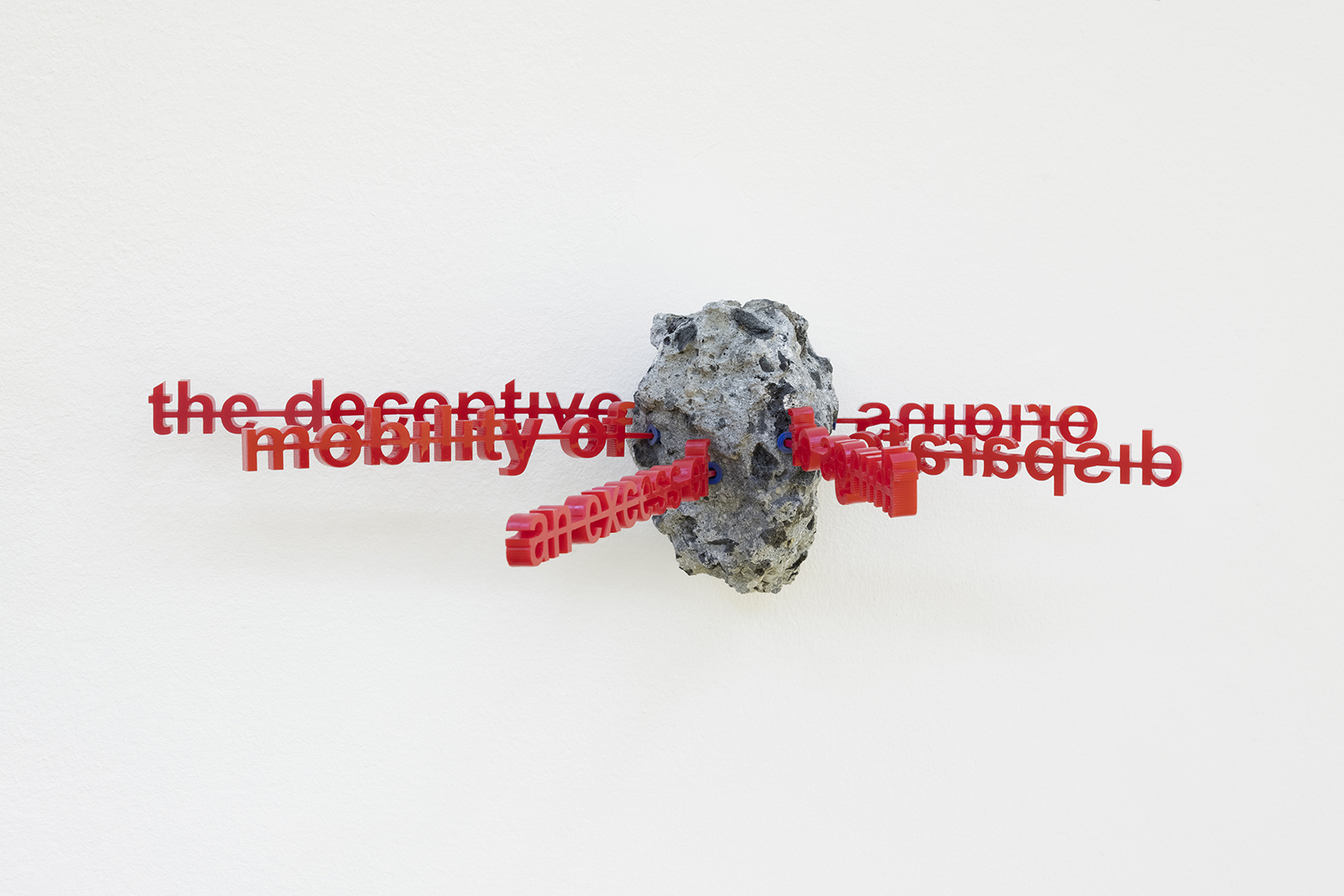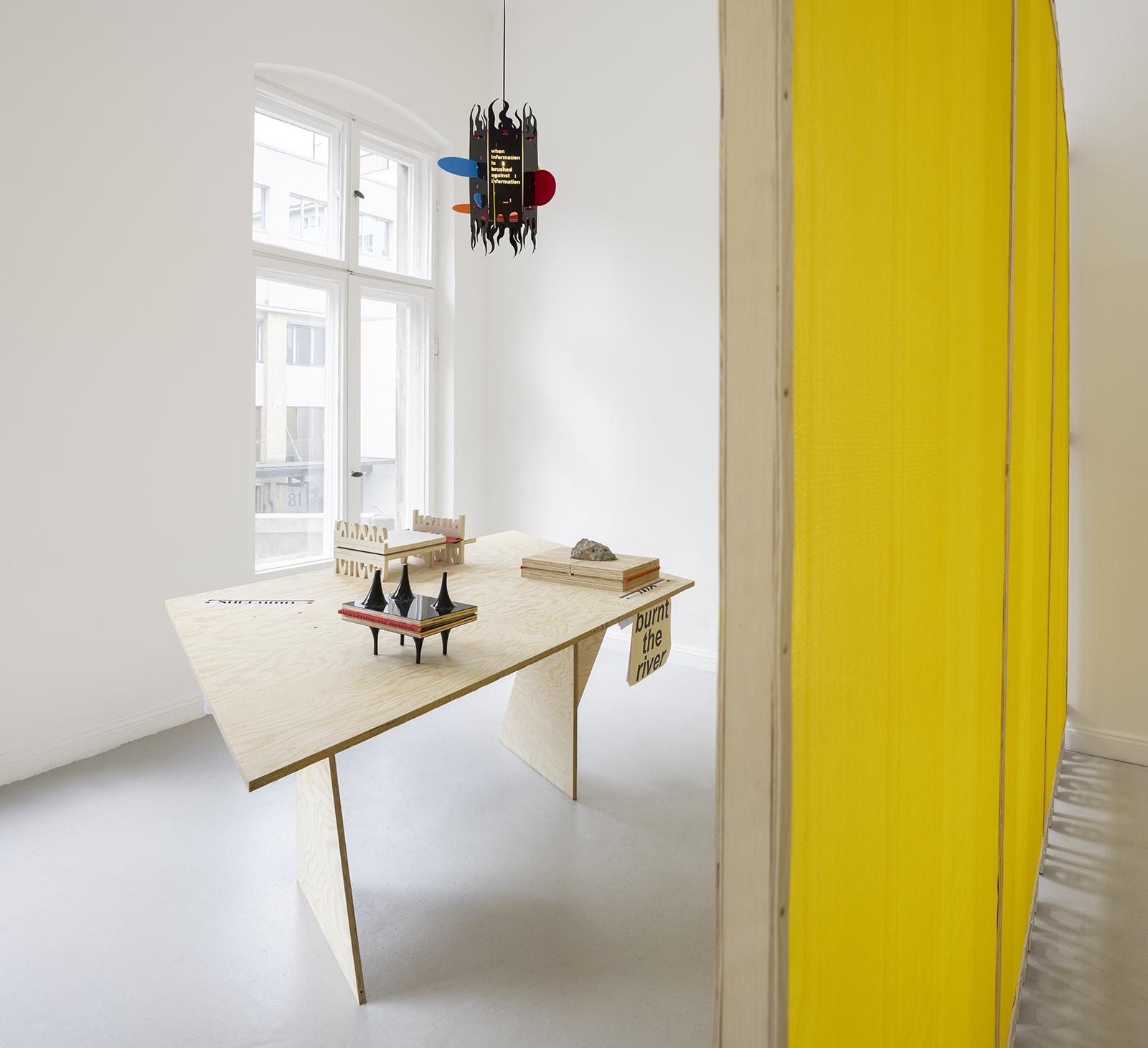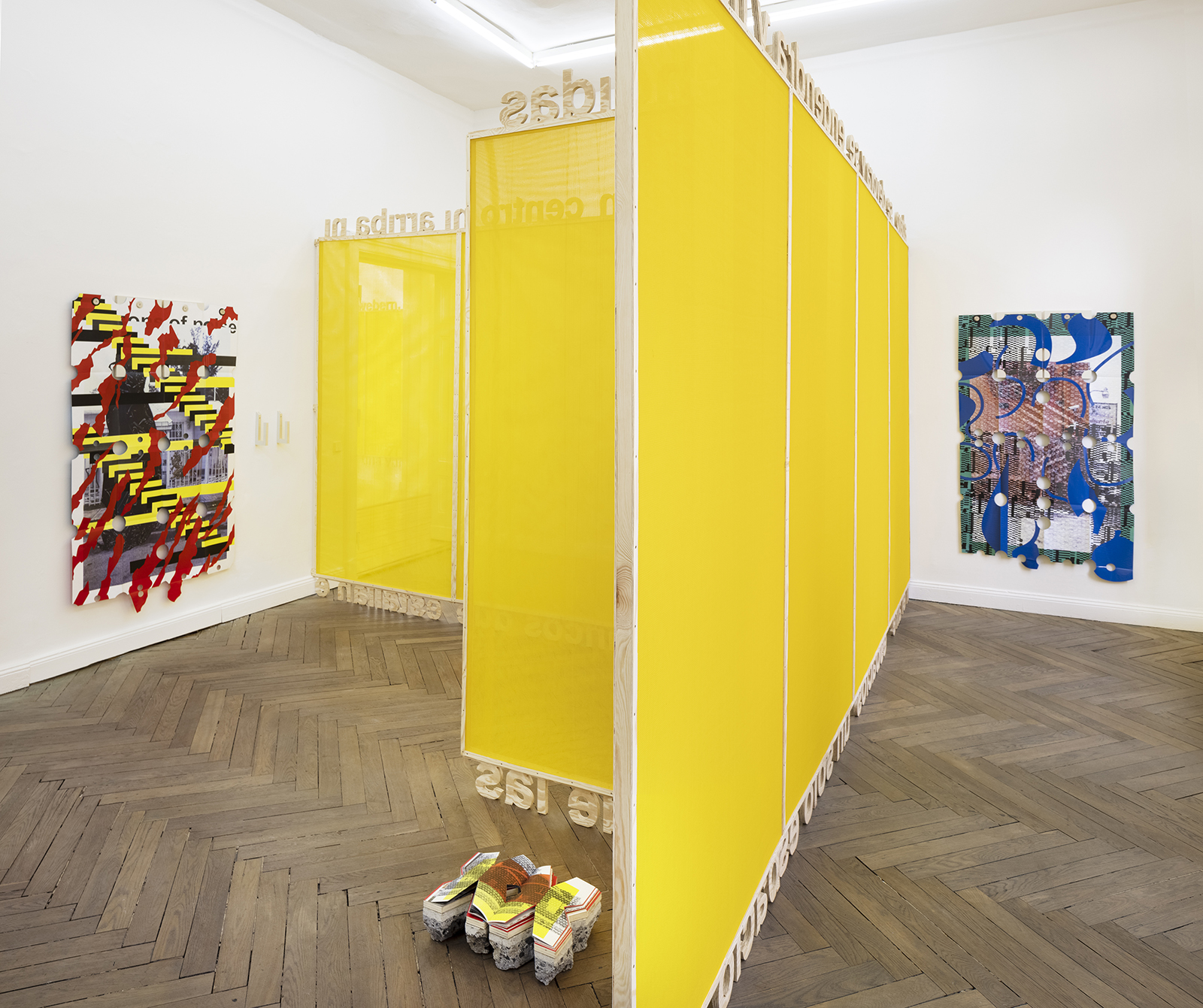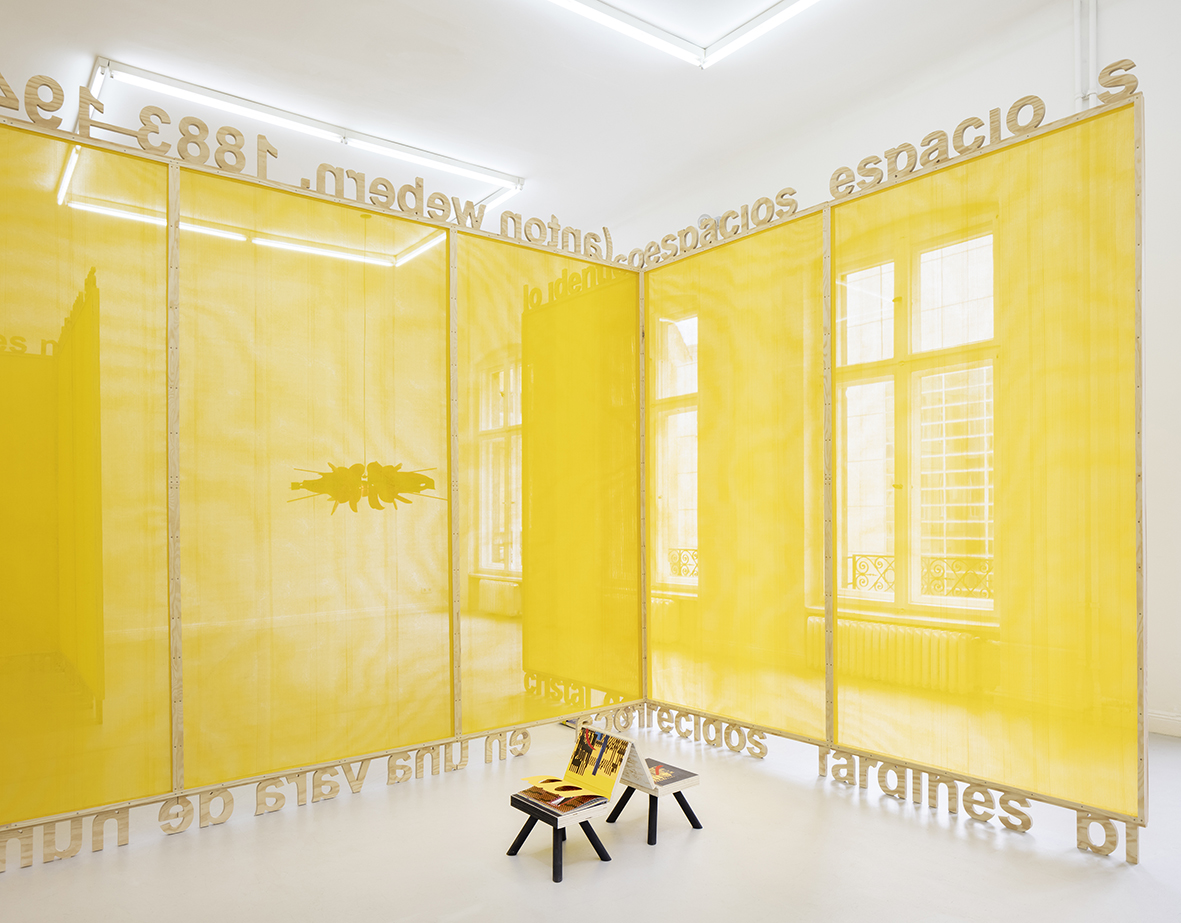aaa
aaa
Rafael Domenech is at the forefront of a new generation of artists that is redefining the exhibition experience. Domenech’s conceptual practice ranges from small artist’s books to large-scale architectural constructions that often work in tandem with one another. In “Notations from Somewhere,”the exhibition takes the form of an experimental publication that constructs and deconstructs the complex book- architecture-city interrelations. For Domenech, exhibition-making is much like publishing: the editorial decisions aim to develop a sequence of moments that create a context for an aesthetic experience. The works in the exhibition integrate the convulsive dynamism of the city and thus heighten our awareness of architecture and the urban landscape outside of the gallery space.
The first work one encounters in the exhibition has stacked Marshall McLuhan’s The Medium is the Message on top of a rock and wedged it into the wall. With this architectural intervention Domenech points to the tension between poetry, discourse, artwork, and architectural structure that is at the heart of the spectator’s experience. Meanwhile, the yellow semi-translucent screens that run through the gallery act as room dividers inspired by Chinese folding screens, but they also transform the three main rooms of the gallery into one large labyrinth-like architectural publication. The text that runs across the top and the bottom of the screens contains the complete poem by the Mexican poet Octavio Paz titled, “Lo Idéntico”, or “the identical/same” in English. The screens, which are built out of repurposed “bad infinity” materials such as plywood and construction mesh, are modular and can be separated to become stand-alone art objects that act simultaneously as 4×8-feet paintings and word sculptures. The thickness of the wood cut word poem emphasizes the international standard size for construction. A sole grey mesh framed by plywood text leans against the wall as a final painting in the sequence.Paz is a major source of inspiration for the artist and also features in another work by Domenech.In“plastic sunshine-opaque transparencies” (2021) an orange electrical cable runs across the second and third floor of the gallery cutting through the floor/ceiling that leads to the offices.
This approach extends to other works on view, including “The Elliptical Hour,” a group of works that are carefully placed across the three rooms and have two configurations: open and closed. The visitors can ask the gallery’s assistant to open and position the books on the wall. When they hang vertically, the “The Elliptical Hour” works resemble posters or paintings that are constructed out of image-tiled laser-print paper overlaid with commercial vinyl. Arranging and rearranging works throughout the exhibition produces an oscillatory motion that invites for a promiscuous viewing experience much like that of cities. This unique approach asks the viewer to consider Domenech’s individual works as part of an artist’s book, where as he says, “objects are words in a poem, the building is the page.”At the same time, the gallery is not simply a container for displaying discreet art objects, instead, the book-architecture complex presents change as a permanent state of our fragmentary post-industrial life, an experience full of affirmation, negation, ambivalence and contradiction.


















